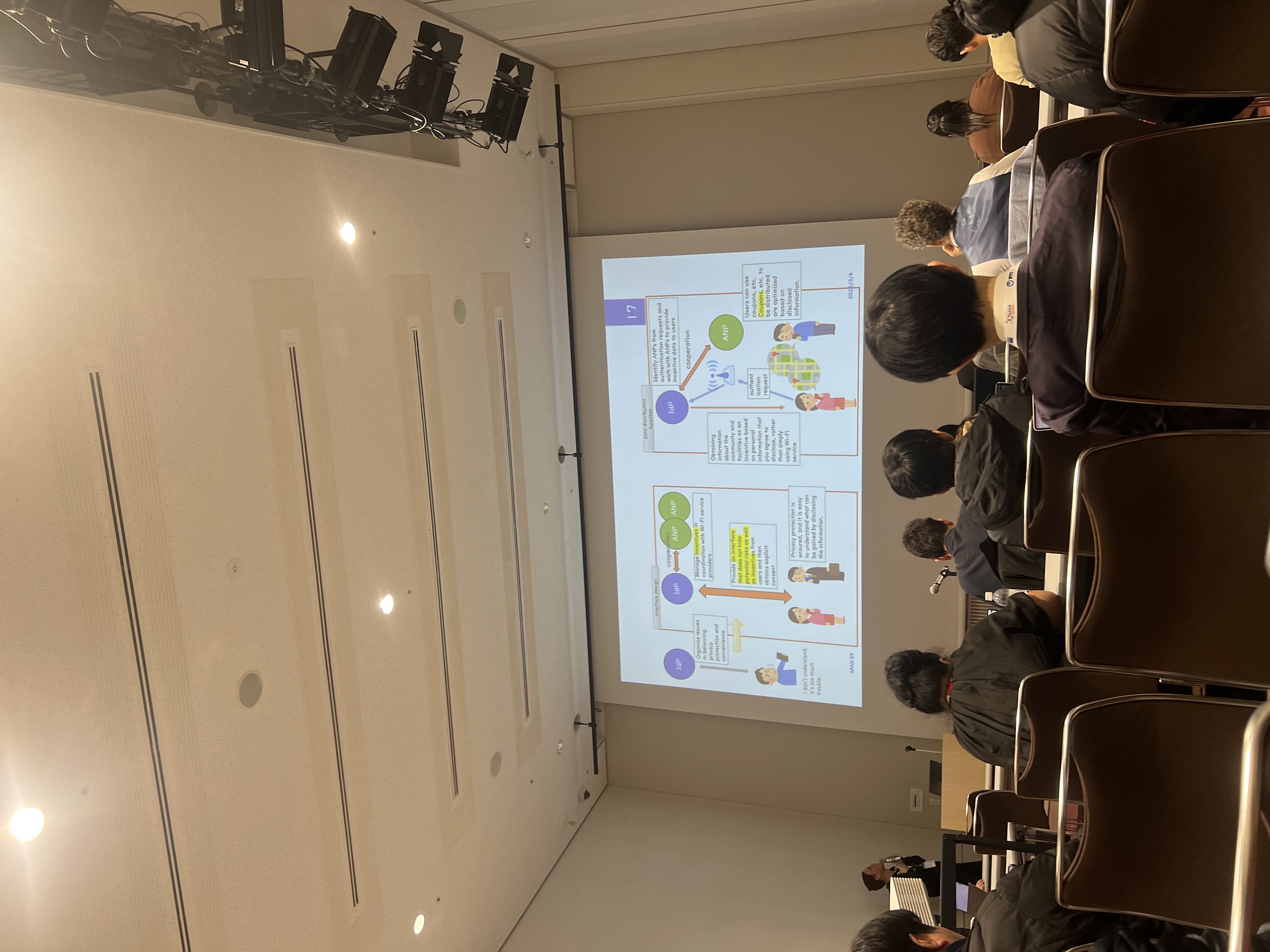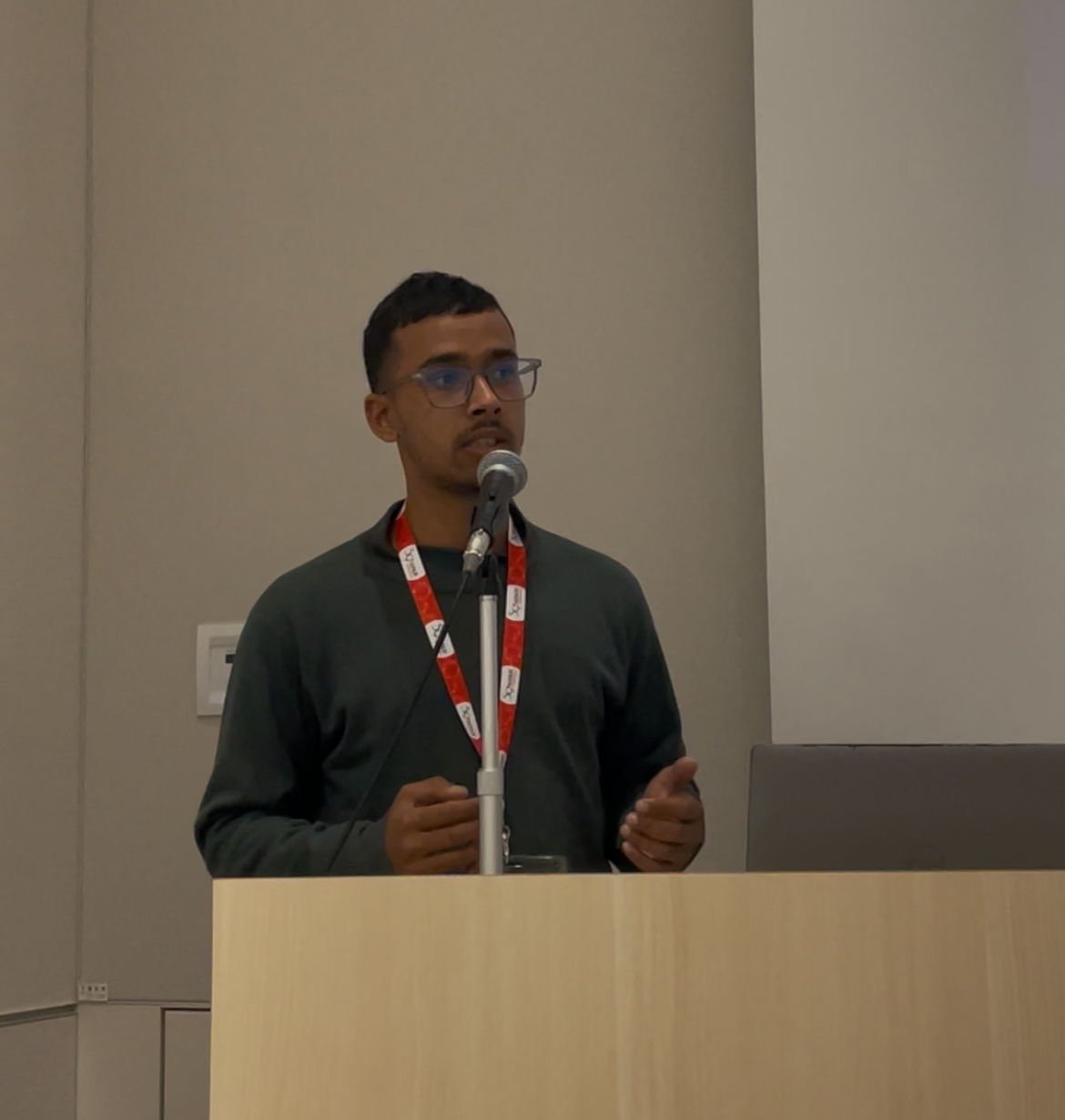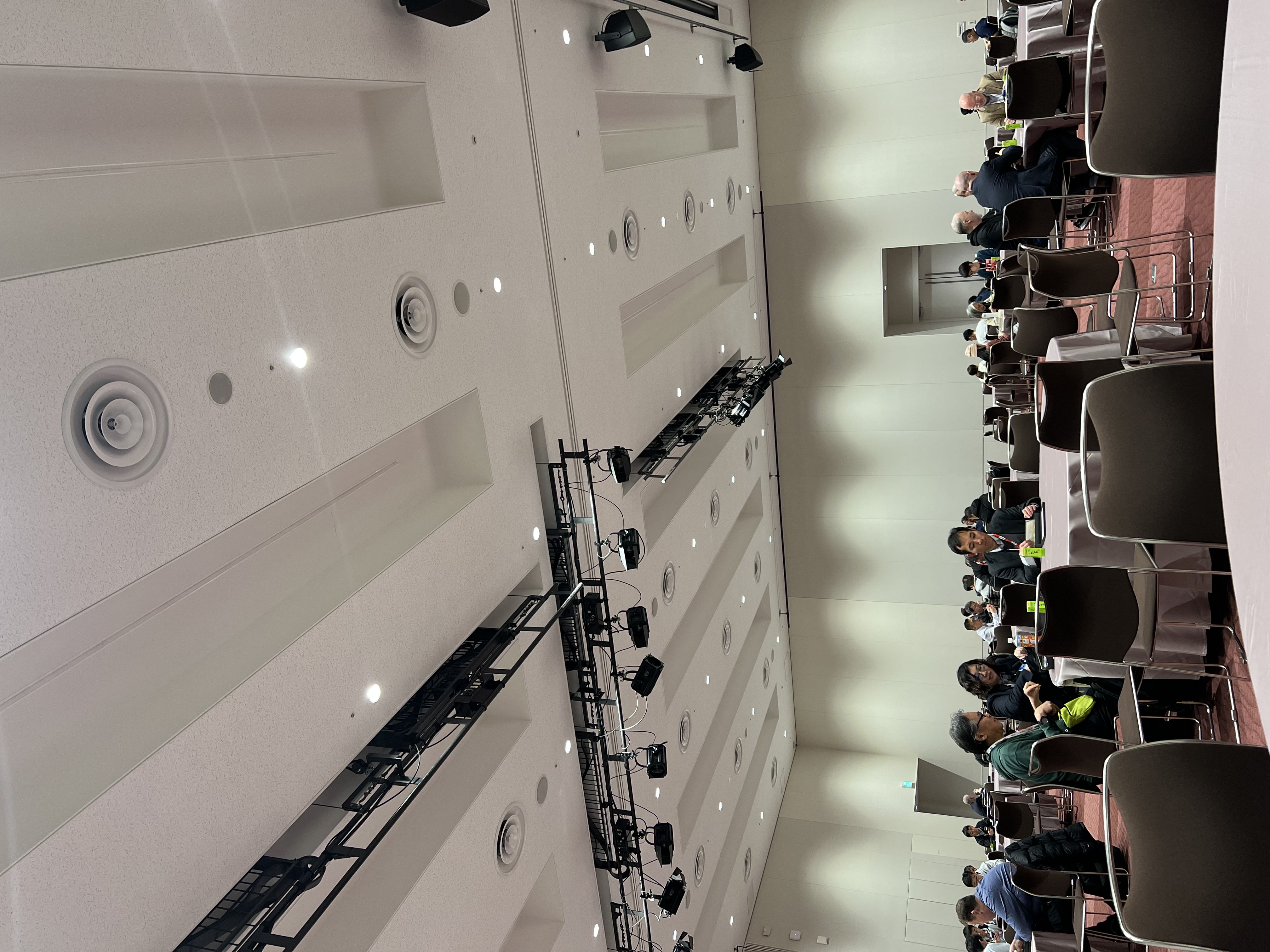
Introduction: Connecting with the Asia-Pacific Research Community
I recently attended the 59th Asia Pacific Advanced Network (APAN) meeting in Yokohama, Japan—a gathering that brought together network engineers, researchers, educators, and technology professionals from across the Asia-Pacific region. APAN59 was more than just a technical conference; it was about reconnecting with colleagues, exchanging ideas face-to-face, and experiencing how research networks are evolving to support scientific collaboration and digital innovation.
Yokohama, with its blend of historical significance and modern infrastructure, provided the perfect backdrop for discussions about cutting-edge networking technologies, emerging research paradigms, and the role of advanced networks in addressing regional challenges.
My Role as an APAN Fellow
I participated in APAN59 as a fellow—a role that provided me with unique opportunities to engage deeply with the conference activities and contribute to the community. The fellowship program brings together emerging professionals and researchers from across the region, facilitating knowledge exchange and building the next generation of research networking expertise.
APAN facilitates collaboration among national research and education networks (NRENs) across the Asia-Pacific region. These biannual meetings serve as crucial touchpoints for network operators, application developers, researchers, and policy makers to share technical knowledge, demonstrate innovations, and coordinate infrastructure development.
As a fellow, my goals were to learn about the latest in network technologies, understand how these infrastructures support scientific research and education, and contribute my perspective on emerging technologies, particularly applications in artificial intelligence and data science.

Conference Structure and Key Sessions
APAN59 was organized into several thematic tracks and working groups:
- Network Technologies: SDN, network automation, 100G+ connectivity, IPv6 deployment
- Research Applications: Scientific collaboration, distance education, telemedicine
- Security and Trust: Cybersecurity, federated identity, secure data exchange
- Emerging Technologies: AI/ML applications, IoT, edge computing, quantum networking
- Digital Inclusion: Community networks, expanding connectivity
I primarily attended sessions in the emerging technologies track and participated in specialized workshops that explored how modern applications—particularly those involving AI—are placing new demands on network infrastructure.
Technical Highlights: Infrastructure Meets Innovation
Advanced Network Capabilities
One of the most impressive aspects was seeing actual demonstrations of network capabilities being deployed across the region. Several sessions showcased 100Gbps connections enabling real-time data transfers between research institutions for collaborative climate modeling and genomic data sharing.
The discussions around network automation particularly caught my attention. Network operators shared experiences implementing intent-based networking and using machine learning for traffic prediction and anomaly detection. The complexity of managing multi-domain research networks makes automation not just convenient but essential.
Science DMZ and Data-Intensive Research
A recurring theme was the Science DMZ architecture—a network design pattern creating friction-free paths for large-scale data transfers. Researchers presented compelling case studies, including how a multi-petabyte environmental monitoring dataset was transferred between institutions in different countries, something logistically impossible just years ago.
These infrastructures are becoming essential as machine learning models grow larger and training datasets become more diverse. The ability to move data efficiently between institutions and compute facilities is increasingly critical.
Workshop Experience: AI in Software Development
One of the highlights of my APAN59 experience was participating in an intensive workshop focused on artificial intelligence applications in modern technology workflows. The workshop brought together participants from diverse backgrounds—network engineers, researchers, developers—to explore how AI is transforming various aspects of our work.
As part of the workshop format, each participant contributed by presenting on a specific topic. I took on the challenge of exploring AI’s impact on software development practices, an area that increasingly intersects with the network infrastructure challenges many APAN attendees face daily.
Exploring the Development Landscape
My presentation examined how AI is reshaping multiple dimensions of software development:
Intelligent Code Assistance: I discussed how large language models now offer sophisticated code generation, going far beyond simple autocomplete to suggesting entire function implementations and helping developers work with unfamiliar frameworks. These tools significantly accelerate development, particularly for routine tasks.
AI-Driven Testing and Quality: The session covered how AI-powered testing tools can generate comprehensive test cases, identify edge cases human testers might miss, and predict bug-prone code sections based on historical patterns. ML models trained on large codebases can flag problematic patterns before they reach production.
Design and User Experience: I touched on emerging tools using AI to generate design mockups from natural language descriptions, optimize layouts for accessibility, and predict user interaction patterns—accelerating iteration cycles and helping developers create more usable interfaces.
Security and Code Review: The presentation highlighted how AI-powered static analysis tools are becoming more sophisticated, identifying not just syntax issues but semantic vulnerabilities and security weaknesses that might escape traditional review processes.
Connecting to Research Software
Given our audience of research network professionals, I emphasized the particular relevance for research software engineering. Many scientific applications are developed by domain experts without formal software engineering training. AI-assisted development tools can bridge this gap, helping create robust, maintainable code while focusing on scientific questions.
The workshop discussion that followed was energetic and insightful. Participants shared both positive experiences and thoughtful concerns about AI development tools. We explored important considerations around code quality, the necessity of understanding what AI-generated code actually does, and questions about intellectual property when using these tools.
The collaborative format made the workshop particularly valuable—each presentation sparked discussions that connected different perspectives and use cases, creating a richer understanding than any single presentation could provide.

Innovation and Broader Impact
While APAN59 was primarily technical, several sessions naturally addressed how advanced networks and digital technologies support broader development goals. Presentations highlighted how reliable, high-capacity networks serve as foundational infrastructure for education, healthcare, and economic development.
Examples included telemedicine projects connecting rural communities to specialist physicians, distance education initiatives expanding access to quality learning, and agricultural IoT projects helping farmers optimize resources. These weren’t abstract discussions—attendees shared concrete examples of projects fundamentally changing what’s possible for underserved communities.
The role of research networks in supporting innovation ecosystems was another interesting theme. By providing advanced infrastructure to universities and research institutions, these networks enable experimentation with technologies not yet commercially viable, creating testing grounds for innovations that eventually benefit broader society.

Community and Collaboration
Beyond formal sessions, APAN59 reinforced that the true value lies in community connections. Coffee breaks, lunches, and evening social events provided opportunities for conversations that wouldn’t happen in formal settings.
Some of my most valuable learning happened informally. Over coffee, I spoke with a network engineer about practical challenges of maintaining service quality across diverse regions. During lunch, I discussed with researchers how they’re approaching security implications of using cloud services for sensitive research data.
I exchanged contacts with colleagues from multiple countries, creating connections likely to lead to future collaborations. The APAN community has a distinctive character—people are genuinely interested in helping each other solve problems and sharing knowledge across institutional and national boundaries.
Yokohama: Perfect Venue for International Collaboration
Yokohama, historically Japan’s gateway during the country’s opening to international trade, felt symbolically appropriate for a conference about international connectivity and collaboration. The modern, well-equipped venue provided excellent facilities for both large plenary sessions and smaller working group meetings.
The local organizing committee’s attention to detail made the conference run smoothly. During schedule breaks, I explored the waterfront area with fellow attendees—the blend of historical architecture and modern development provided a pleasant environment for continuing conversations started in sessions.
Key Takeaways and Reflections
Technical Insights
Several themes emerged as particularly significant:
- Network automation is becoming essential as networks grow in scale and complexity
- Application requirements are driving infrastructure evolution, especially data-intensive research and AI/ML workloads
- Security must be designed in from the start, with federated identity and zero-trust architectures moving from concepts to implementations
- Edge computing and regional connectivity are critical for enabling applications to reach end users
Professional Growth
APAN59 reinforced the value of stepping outside one’s immediate professional bubble. Understanding the network infrastructure that supports applications provides crucial context for development work. The challenges network operators face—managing capacity, ensuring reliability, balancing security with usability—directly impact what’s possible at the application layer.
The workshop format was particularly valuable for professional development. Contributing a presentation pushed me to organize my knowledge and consider how AI development tools relate to the broader infrastructure context. The discussions with participants from different backgrounds provided perspectives I wouldn’t have encountered otherwise.
Community Value
The most important takeaway is that technology development happens within communities. The innovations showcased at APAN59 resulted from collaboration, knowledge sharing, and people’s willingness to help each other solve hard problems.
The regional nature of APAN brings together people working in diverse contexts—from highly developed networks to emerging infrastructure in developing nations. This diversity generates valuable perspectives, as solutions must be adapted across different contexts, driving innovation through the sharing process.
Looking Forward
APAN59 left me optimistic about the future of research networking in the Asia-Pacific region. The technical capabilities being deployed are impressive, but more importantly, the collaborative spirit and commitment to enabling research and education through advanced networks remain strong.
Emerging trends likely to shape the next few years include AI integration throughout the network stack, quantum networking preparation, sustainability focus, and continued efforts to close connectivity gaps across the region.
Conclusion
APAN59 was more than a technical conference—it was a reminder of why this work matters. Research networks are invisible infrastructure enabling visible impact. They support scientific discoveries, enable educational opportunities, facilitate healthcare delivery, and provide the foundation for AI and data-intensive applications addressing pressing challenges.
For anyone working at the intersection of networking, research computing, or advanced applications, I highly recommend attending an APAN meeting. The technical content is substantial, but the community connections and cross-cultural exchange provide value extending far beyond any individual session.
The workshop experience particularly enriched my participation—contributing alongside peers and engaging in collaborative learning created connections and insights that continue to inform my work.
